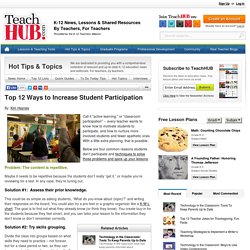

Blooms taxonomy and apps. Notemaking-ebook1. Study Vibe - How to study - study skills for primary and high school students. SOLO taxonomy. I am pleased to say that John Biggs himself has endorsed this representation of his ideas; "I've just found your website on SOLO et al. via google.

I'm delighted! Your diagrams of prestructural-extended abstract are very elegant... " (Unsolicited email, 29 May 2005) The SOLO taxonomy stands for: Structure of Observed Learning Outcomes It describes level of increasing complexity in a student's understanding of a subject, through five stages, and it is claimed to be applicable to any subject area. I confess to a slight distrust of this kind of "progressive" model, which aspires inexorably to a final state. However, the emerging field of work on Threshold Concepts and Troublesome Knowledge links in very effectively with the SOLO taxonomy and offers some points about how the above issues might be addressed.
There is a small but enthusiastic group of teachers using the SOLO taxonomy to structure their teaching in schools, and blogging about it. Education Endowment Foundation (EEF) / EEF Toolkit. LOVE KNOWLEDGE, LIVE TO LEARN.. Bouncy Balls. 50 Ways to Manage Student Behaviour. Educational Technology Made Simple. Top 12 Ways to Increase Student Participation. Call it "active learning," or "classroom participation" -- every teacher wants to know how to motivate students to particpate, and how to nurture more involved students and fewer apathetic ones.

With a little extra planning, that is possible. Below are four common reasons students don’t participate and techniques to solve those problems and spice up your lessons. Problem: The content is repetitive. Maybe it needs to be repetitive because the students don’t really “get it,” or maybe you’re reviewing for a test. In any case, they’re tuning out. Solution #1: Assess their prior knowledge. This could be as simple as asking students, “What do you know about (topic)?” Technology in the classroom tools that keep parents informed about classroom... To kick off this holiday week, we want to spread a little Thanksgiving joy with... Teaching strategies to help guide your students through a writer’s workshop...
Exciting ways to use video conferencing in your classroom. Solution #2: Try skills grouping. TEACHING TIPS. Making Study Plan, Study Schedule. A very well-known saying is, “He who fails to plan, he plans to fail”. Planning is very much important, if you want to be a successful student. A schedule helps you in utilizing your time more productively. It helps you to complete your course in a particular time. It tells you how much part of your course should be studied weekly or monthly so that you can complete your course before the exam. A schedule is made on weekly or monthly or daily basis. Count the number of subjects included in your course. Example. . • Book-1 = 15 chapters = 185 topics • Book-2 = 20 chapters = 200 topics • Book-3 = 13 chapters = 145 topics • Book-4 = 16 chapters = 190 topics His entire course comprises of 185+200+145+190 = 720 Topics He has 6 month for preparation or 30x6 = 180 Days Divide total topics by total days you have for preparation, 720 topics/180 days = 4 topic/per day.
After this calculation he shall make a table (having rows and column) on paper with the help of ruler and pen. Flashcards: The worlds largest online library of printable flash cards - StumbleUpon. Class Room. Memory Improvement Techniques - Improve Your Memory with MindToo. © VeerPRZEMYSLAW PRZYBYLSKI Use these techniques to improve your memory. The tools in this section help you to improve your memory. They help you both to remember facts accurately and to remember the structure of information. The tools are split into two sections. Firstly you'll learn the memory techniques themselves.
As with other mind tools, the more practice you give yourself with these techniques, the more effectively you will use them. Mnemonics 'Mnemonic' is another word for memory tool. The idea behind using mnemonics is to encode difficult-to-remember information in a way that is much easier to remember. Our brains evolved to code and interpret complex stimuli such as images, colors, structures, sounds, smells, tastes, touch, positions, emotions and language. Unfortunately, a lot of the information we have to remember in modern life is presented differently – as words printed on a page. Born to Learn ~ You are Born to Learn. Pedagogy. Push on the door.